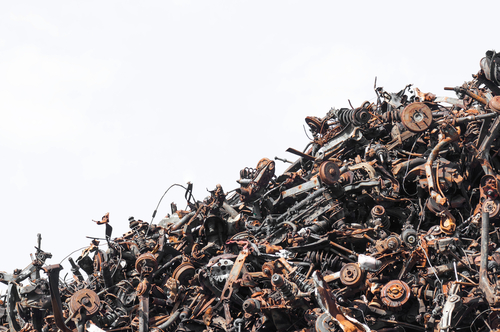What’s The Difference Between Ferrous And Non-Ferrous Metals?
Metal is a common element that we see everywhere. Alloy steel, copper, aluminum, carbon steel, lead, wrought iron are all types of metals. Perhaps, you already know the different types of metals. But what you don’t know is the difference between ferrous and non-ferrous metals. So, what is the difference between ferrous and non-ferrous metal?
Ferrous metals are metals that contain iron, while non-ferrous metals are metals that do not contain iron. This difference is embedded in the core properties of each type of metal that classifies them into their various uses. This article discusses the two categories of metals, their characteristics, and their uses below.
Here are the properties that distinguish ferrous metal from non-ferrous metal:
Properties of Ferrous Metals
Ferrous metals are generally known to contain iron, and they include mild steel, stainless steel, wrought iron, cast iron, and carbon steel. They are known for their stability, firmness, and durability. Most Ferrous metals are susceptible to rust due to the intense amount of carbon used in extracting them. However, they are often coated with a protective material to avoid rust.
Uses of Ferrous Metals
Ferrous metals contain magnetic properties. Hence, they are used in a lot of areas, from construction to the automobile industry. They are used in building bridges, producing industrial containers, and making motors, electrical appliances, and taps. Similarly, maintenance tools such as screwdrivers, bolts, nuts, and screws of all types are made with ferrous metals.
Meanwhile, wrought iron is considered pure iron, and the purity prevents it from rust. Likewise, stainless steel contains chromium that prevents it from rust.
Properties of Non-Ferrous Metals
Non-Ferrous metals ushered our civilization from the Stone Age to the Bronze Age between 4500 B.C to 1500 B.C. They do not contain large amounts of iron, and they exhibit high resistance to corrosion, unlike ferrous metals. Non-ferrous metals are also known for their malleability as they can be easily made into anything via casting and welding. They are great thermal and electricity conductors, especially copper and aluminum.
Uses Of Non-ferrous Metals
Non-ferrous metals are generally lightweight and can be used in the construction and engineering industries too. In fact, many people turn to non-ferrous metals for use because they are easy to fabricate. While they do not contain magnetic properties, they have a lower density and high ductility. They are excellent for aesthetic purposes because they are colorful.
Furthermore, non-ferrous metals are reportedly some of the world’s most recycled metals. Aluminum is a good reflector of light and is resistant to organic acids. Non-ferrous metals are great for household uses too. They are used in making utensils, electroplating, making cables and wires, preparing paints, and even roofing a building or sheathing equipment.
Conclusion
In conclusion, non-ferrous metals and ferrous metals have very significant differences. The major differentiating factor lies in the amount of iron present in the metals. More people tilt towards non-ferrous metals, but ferrous metals are pretty strong. Non-ferrous metals can be expensive and also non-magnetic. However, they are pretty durable because they are corrosion resistant and do not require an extra coating of a protective substance to keep them from rusting.
Sell Your Scrap At Allied Recycling
Allied Recycling is the number one source for all things scrap metal in Massachusetts & the surrounding area. If you have questions about scrap metal recycling or how much your metal is worth, call our team today at (508) 668-8699 or view our Service Area!

